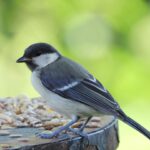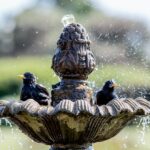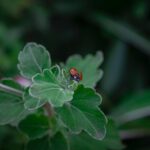Understanding Migratory Birds During Fall
The spectacle of migrating birds is a perennial thrill, but what exactly are migratory birds? In essence, migratory birds are species that travel between breeding and non-breeding territories, often covering vast distances. They undertake this epic journey twice each year, traversing continents and crossing oceans in their quest for suitable habitats. Their ability to navigate these long distances and arrive on time is nothing short of miraculous.
Migratory birds are much more than just seasonal visitors. They play crucial ecological roles, aiding in pollination, seed dispersal, and pest control. Without these feathered travelers, our ecosystems would face severe challenges. Indeed, the importance of migratory birds cannot be overstated.
Suitable Habitats for Migratory Birds
Naturally, these hardy voyagers are drawn to certain habitats. Most prefer areas that offer ample food resources, safe nesting sites, and plenty of cover to hide from predators. However, with rapid urbanization and habitat degradation, finding these suitable spots is becoming increasingly challenging.
You can contribute to the cause of conservation by creating a bird-friendly habitat right in your backyard. Leave dead trees standing or place nesting boxes to provide safe roosting and nesting spaces. In addition, keeping your garden pesticide-free helps ensure a healthy food source for these visitors.
Perfect Plants for Attracting Migratory Birds
Planting native trees and shrubs is another excellent way to lure in migratory birds. These plants will offer familiar food sources and nesting materials to the visiting birds. Berry-producing shrubs like mountain ash, dogwood, and elderberry are all attractive to a wide variety of migrating songbirds.
Keep in mind that different types of flowers attract different birds. For example, hummingbirds are drawn to tubular flowers with nectar, so adding some penstemons or fuchsias to your fall garden can be quite appealing to them.
Offering the Correct Diet
It’s also important to note that different species have different dietary needs. While some birds are insectivores, others prefer seeds or fruits. Offering a variety of feed can attract a wider range of species to your garden.
Choosing quality feeders and food greatly increases your chances of seeing various species. And let’s not forget the importance of providing a clean water source. A birdbath or a shallow dish of water can be a lifesaver for birds.
Minimizing Disturbances to Migratory Birds
Remember, our feathered friends need peace and quiet. Minimizing light pollution, keeping a safe distance, and controlling your pets are all key to ensuring a calm environment. Also, try to use muted colors in your garden décor as bright colors can scare away skittish birds.
Ensuring Safety from Predators
Last but not least, safety from predators is a major concern for birds. Common threats in the US include house cats, snakes, raccoons, and even certain types of reptiles like green iguanas. Keeping these predators at bay can go a long way in maintaining a welcoming environment for your feathered guests.
From maintaining birdfeeders and birdbaths to predator-proofing your yard, several strategies can be employed to keep your visiting birds safe. Not only will these efforts help protect the birds, they will also enrich your experience by attracting a wide variety of species to your backyard.
Remember, attracting migratory birds begins with understanding them and creating a safe, welcoming environment. With a bit of planning and consideration, your backyard can serve as an inviting stopover for these charming creatures.



